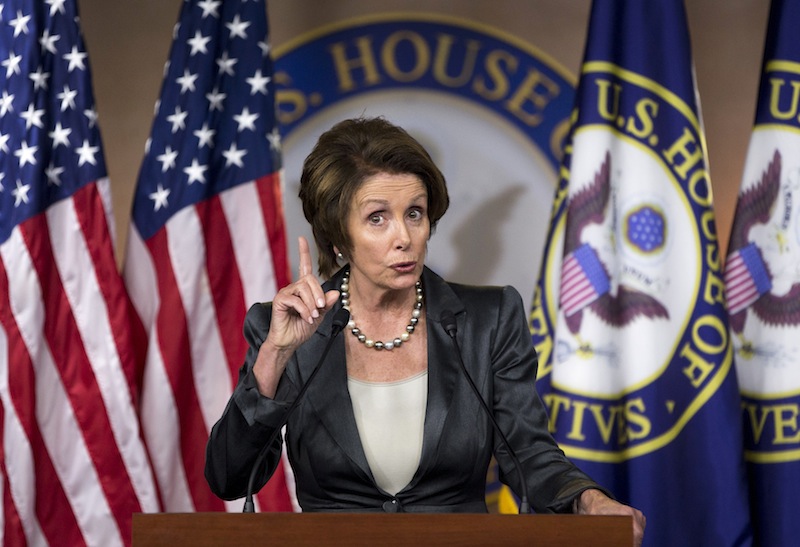House Democrats think they’ve found a legislative ploy to bring the Senate-passed temporary spending bill to the House floor and end the government shutdown.
The move amounts to a legislative Hail Mary because it would require moderate Republicans to break with their leadership, something they’ve so far been unwilling to do.
In recent days, talk of a “discharge petition” has been circulating the Capitol. The simple explanation of that process is this: If more than half of the House (217 today) signs a petition to bring a bill to the floor, the legislation can be considered without House leadership signing off on it.
But the procedural catch is, a bill being brought to the floor via a discharge petition must have been filed for at least 30 legislative days. For the recently filed Senate-passed temporary spending bill, a 30-day delay would last until November and well past the debt-ceiling deadline that is looming in mid-October. In other words, too late to do much good.
But House Democrats think they’ve found a procedural loophole, according to a plan outline obtained by TPM. The road is a bit complicated.
They’re planning to bring an existing bill, filed in March by Rep. James Lankford (R-OK), called the Government Shutdown Prevention Act, to the floor. That bill would keep the government funded at current levels. By using an existing bill, they avoid the 30-day delay.
Here’s the timeline. House Democrats will file an “Open the Government” resolution, calling for a floor vote on Lankford’s bill, on Friday. After it sits untouched in the House Rules Committee for seven legislative days, they can file a discharge petition to bring the resolution to the floor, likely by Oct. 14 at the earliest.
After the resolution is approved by a simple majority of the full House, then by the resolution’s own terms the Lankford bill would come up for a vote. At that point, Democrats would replace Lankford’s bill with the Senate bill and vote on it.
All of that would require moderate House Republicans to revolt against their leadership first to sign the discharge petition, then to approve the resolution, and finally to vote for the Senate bill. That’s a series of big if’s.
For the last week, we’ve been hearing about the coalition of moderate Republicans and Democrats who could come together and re-open the government, even if the House GOP leadership is blocking the way.
So far, the moderate revolt hasn’t materialized. Those House Republicans have had repeated opportunities to buck their leadership on procedural votes related to the shutdown. They haven’t done it yet, so there’s plenty of reason to be skeptical about this latest plan.
But the numbers are theoretically there. All 200 House Democrats would likely support bringing the Senate bill to the floor. According to the Washington Post’s tracking, at least 20 House Republicans have said they support the “clean” Senate bill. Add those numbers up and you have enough signatures to bring the bill to the floor. So the math in theory is clear, but the politics is not.
“One thing is becoming clearer: a growing number of Republican members want an opportunity to work with Democrats to end this crisis,” Rep. George Miller (D-CA), one of the plan’s architects, said at a Friday press conference. “Today we’re offering my Republican friends a way forward.”






